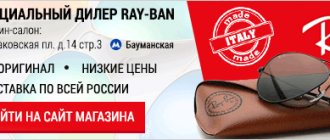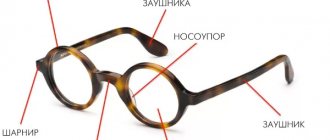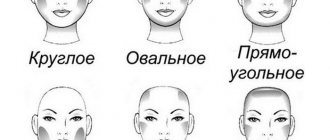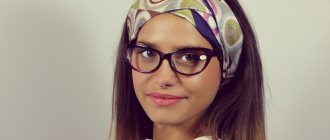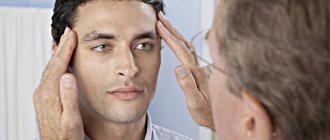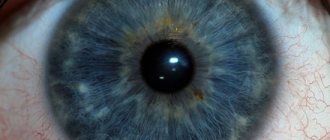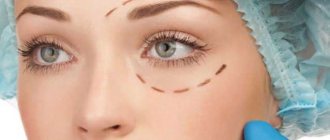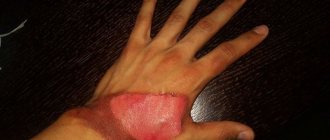What are the different eye shapes?
When asking this question, as a rule, only the almond-shaped shape comes to mind, often found in everyday life and literary works. In fact, there are many other forms that in one way or another characterize their owner.
Big and small eyes
Actually, in this case we are talking more about the size than the shape of the eyes. Their appearance can be completely different. Psychologists say that people with large eyes have the following traits: excessive sensuality and fine mental organization.
True, variations are possible. For example, if the eyes themselves are not very large, but seem so against the background of small facial features, then the person is characterized, first of all, by excessive rigidity, often bordering on cruelty.
If they say that a person’s eyes are small, again we are talking about their size. Such eyes are often found in people with such character traits as self-sufficiency, stubbornness, perseverance in achieving a goal, and constancy.
Round eyes
Finally we got to the form. Round eyes are quite common. Their owners are distinguished by their desire for success. However, paradoxical as it may sound, they are very rarely able to take responsibility for specific decisions or actions. As a result, ambitious aspirations remain unfulfilled.
Triangular shaped eyes
Eyes with triangular outlines are very rare in our latitudes. Psychologists characterize their owners as people who are not serious in business or any undertakings. These individuals are excessively talkative, which does not exclude, however, the presence of a certain worldly wisdom or talent!
Slant eyes
It is a big misconception to think that we will now talk about Asians. This eye shape is quite common among Europeans. And what is noteworthy is that people with such eyes are endowed with a lot of positive traits and human characteristics: tolerance, sentimentality and kind-heartedness.
Almond shaped eyes
Here it is, that same almond-shaped eye shape. This is what many, for some reason, consider to be correct. Perhaps because the almond-shaped eye shape is especially common and is often perceived as a kind of standard of beauty.
Psychologically, people with these eyes are characterized by the following: they are creatively gifted, adore art, very attached to friends, loyal to other people's opinions.
Finally
To summarize, it is worth noting that there is simply no such thing as correct or ideal eyes.
It all depends on the harmony of their combination with the facial features in general. At the same time, even in the absence of special harmony, this can be easily corrected by skillful application of makeup. And, most importantly: beautiful eyes are healthy eyes. After all, their healthy shine is much more important than color and external shape. Fomenko Natalia Ivanovna
Racial features of the face
The division into races is based on several morphological features. According to the current classification, the division into races is carried out according to the so-called anthropogeographic principle and skin color. There are three main races: Caucasian, which includes people with fair skin; Negroid, its representatives have black skin, and Mongoloid - yellow race. Each group is divided into subgroups that differ in certain characteristics, but they are based on anthropological and geographical influences (Fig. 6).
Among representatives of the same race, the shape of the head and face has common features, but there are also pronounced exceptions. As a result of mixed marriages between representatives of different races, a kind of hybridization occurs, during which mixed forms arise, that is, individual somatic characteristics are modified. This fully applies to skin color, texture and hair color, eye color, head shape, nose shape. Rice. 6 The main races of people a - Caucasian b - Negroid c - Mongoloid REPRESENTATIVES OF THE EUROPEAN RACE Among them, many groups are distinguished, and morphological features vary quite widely. They live in Europe, northern Africa, the Middle East, India, Siberia, and northern Japan. As a result of immigration and mixed marriages, they are found on almost all continents (North and South America, Australia, etc.). Main features of the head and face: - The skull and head belong to the dolichocephalic or mesocephalic types, in some nationalities - to the brachycephalic type, - skin color from white-pink to light brown, - the face is high, wide in the middle, without signs of prognathism, - the hair is thin, smooth or wavy, the color ranges from black and chestnut to light brown, the facial hair is significant, - the forehead is vertical or sloping, the brow-nose area is weakly expressed, - the nose is slightly raised, the root and back of the nose stand out, the nostrils are narrow or slightly expanded; - cheekbones are small, not protruding, - medium-sized auricle, - shallow-set eyes, large eye shape, different eye colors - from dark brown to light gray-blue, - lips of medium fullness or narrow, medium-sized mouth opening (about 50 mm ), - protruding chin.
a) Northern peoples (live in the northwestern part of Europe - in the Scandinavian countries, Iceland, Great Britain, Denmark, northern Germany and other regions): - the head belongs to the average dolichocephalic or mesocephalic type, the back of the head stands out, - the skin color is white-pinkish , there are freckled faces - the face is narrow, high; the features of prognathia are not visible in profile, the brow ridges stand out a little, - the hair is light - from light ash to light chestnut, - the forehead is high, slightly sloping, - the nose is thin, the nostrils are narrow, the back of the nose is protruding and straight, there are also aquiline noses , - the eyeballs are not protruding, the eye shape is small, the color is gray-blue or green, - the lips are thin, the mouth opening is narrow, - the chin is well defined, the lower jaw is high.
b) Baltic peoples (north-eastern part of Europe - Poland, Lithuania, Russia and other regions): - head of brachycephalic type, high, - skin color is white or ivory, - face is wide and short, angles are visible, - hair is smooth and thin , the color is light brown or chestnut, - the nose is short, small, the back of the nose is concave, the tip of the nose is turned up, - cheekbones are visible, - the chin is wide.
c) Peoples of the Mediterranean (regions of Europe, Africa and Asia located near the Mediterranean Sea): - the skull and head are of the dolichocephalic type, narrow; The mesocephalic type is also found, the occipital part is prominent, - the skin color is dark or bronze, - the face is oval, narrow, clear contours, - the hair is wavy, predominantly dark in color - from chestnut or dark chestnut to black; abundant facial hair, - the nose is medium-sized, narrow, the tip of the nose is thin, the back of the nose is straight, the base is located on a horizontal plane or has a slight slope forward and downward, - the cheekbones do not stand out, - the eyeballs are large, the eye shape is large. The eye color is dark (brown or black), the lips are full and prominent, the mouth is of medium width, the chin is prominent, the lower jaw is high.
d) The peoples of the Iranian group (Persians, Armenians), live on the territory of the Iranian plateau and in Mesopotamia: - the head is short (and high), of medium width, the occipital region does not stand out, - the skin color is light brown, - the face is narrow and high, contour triangular - hair is thick, wavy, black; abundant facial hair, thick eyebrows, - the nose is large, the bridge of the nose is straight or strongly convex, the nasofrontal fold is weakly expressed, - the eyes are large, the color is dark brown or black, - the lower lip is slightly pushed forward, - the lower jaw is low.
e) Alpine peoples (Central, Northern Europe, the Alpine massif): - the skull and head are of the brachycephalic type, wide and low, the occipital region is not prominent, - skin color is white-pink or yellow-brown, - the face is short, wide, oval or round, - the hair is smooth, slightly curly, chestnut color, dark chestnut or black, - the eye sockets are of medium width, the eye color is brown, gray, - the nose is short, wide in the nostril area, the back is narrow, straight or concave, - the chin does not stand out , the lower jaw is low and wide.
f) Peoples of the Adriatic region (Danube Plain, Anatolia, eastern coast of the Adriatic): - the skull and head are of the brachycephalic type, short and very tall, the back of the head is flat; among Anatolian peoples, on the contrary, the dolichocephalic type of head with a noticeably pronounced occipital region predominates, - the skin color is dark or brown, - the face is elongated, wide in the middle part, narrow in the lower jaw, - hair is smooth, chestnut or black; abundant facial hair, - the nose is elongated and raised, the back is straight or convex (aquiline noses are also found), there may be a small depression at the root of the nose, - the eye sockets are high, the eye shape is narrow and horizontal, the eye color is brown, blue and green eyes are also found , - the lips are narrow, the chin is upturned and high, the lower jaw is small, low and narrow.
g) Lapland peoples (north of Scandinavia): - the skull and head are brachycephalic type, wide, short, the protrusion of the occipital region is insignificant, - the skin is light brown or brown, - the face is wide, large, the outline is quadrangular, - the hair is smooth, straight or wavy, dark chestnut or black, little facial hair, - short, raised, narrow nose, straight or concave bridge of the nose, - prominent cheekbones, - small and low eye sockets, narrow eye shape, dark brown or black eye color, - narrow lips , the chin is small and pointed, the lower jaw is wide and low.
h) Peoples of India (northern India, Ganges basin, Hindustan Peninsula): - skull and head are narrow, elongated, belonging to the dolichocephalic type, the occipital region is prominent, - skin color is dark brown, - face is elongated, wide in the middle, oval contour , - hair is long, thick, smooth or wavy, black or chestnut in color, abundant facial hair, - forehead is high, slightly narrow, slightly convex, - nose is upturned, narrow at the root, widened at the base, the bridge of the nose is straight with a noticeable subnasal fossa , - the eye sockets are large, the eyeballs are not protruding, the eye shape is large and oval, the eye color is dark brown or black, - the chin is short, not prominent. Polynesians. Those living on the islands of Oceania are very similar to representatives of the Caucasian race: - the skull and head are of the brachycephalic type, they are round (short and wide), the back of the head is flat, - the skin color is light brown or reddish brown, - the face has an oval shape, wide, tall, no prognathic features, hair wavy, smooth. Black in color, little facial hair, - large eyes, light brown color, large eye shape, elliptical in shape, Mongoloid fold, - prominent cheekbones, widely spaced, - wide, high nose, narrow root of the nose, straight back, - lips fleshy, the mouth opening is wide, the lower jaw is massive, the chin is upturned. Representatives of the Negroid race There are different groups, each of which has its own morphological characteristics (Sudanese, peoples living in the Nile region; Congolese, Bantu, Bushmen, Hottentots and others). They live in Central and Southern Africa, in some regions of Asia. Currently, as a result of migration, they live in North, South America and Europe. • Main features of the head: - the skull and head are of the dolichocephalic type, elongated, the back of the head is protruding, - the brow and orbital ridges are not prominent, - the lower jaw is strong, - the skin color is from brown to dark brown and deep black, - the forehead is high, straight, convex, protruding in the middle part, but not in the lateral areas, the frontal tubercles stand out, - the face is wide, high in the middle part, has features of alveolar prognathia, - cheekbones stand out, - the nose is very wide at the base (platirrino), the dorsum of the nose is flat, wide and concave, the tip of the nose is rounded or has a flat shape in the transverse direction, the nostrils are widened (in the transverse direction), - the auricle is small, - the eyes are small, shallow-set, the color is black, the sclera has a yellowish tint, - the lips are fleshy, protruding, pigmented , the mouth gap is wide (on average it is 60 mm), the teeth are of medium size (mesodonti), the upper incisors are inclined forward, - the chin protrudes slightly, - the pear-shaped opening is located low and very wide in the lower region, - the contour of the eye sockets is almost square or round, - the frontal protrusion of the zygomatic bone is extended and directed backwards, as a result, attention is focused on the depth of the canine fossa. The profile of the face is very peculiar, concave, angular in the frontal plane (due to the deep transverse depression in the area of the root of the nose). Representatives of the Mongoloid race There are different groups, each of which has its own morphological characteristics. They live in Central and Southeast Asia, the Philippines and North America (Eskimos in Alaska and Canada). The indigenous population of the American continent only partially has characteristic Mongoloid features (see below). Main features of the head: - the skull (and head) is large, wide and short (brachycephalic type), - the eye sockets are high, shallow, their upper and lower edges are located horizontally, - the lower jaw is strong, the intermandibular diameter is large, - the skin color is white-yellowish, varying intensity, from very light to dark - the face is large, high, flattened. The nasal fold does not stand out, - the hair is smooth, thick, thick with a round cross-section, the color is black, the facial hair is insignificant, - the forehead is wide, straight and slightly sloping, the brow ridges and bridge of the nose are not prominent, - the nose is small, the tip of the nose is thin, the back straight and slightly raised (especially in the root area), the base of the nose is thin (something between “leptorrino” and “camerrino”), - the face has high cheekbones, the cheekbones are large, protruding forward, - the auricle is medium-sized or large, the earlobe is medium-sized, - the eyeball is not convex, the eye shape is narrow, slightly oblique, there is a fold in the middle (inner) corner of the eye (a Mongoloid fold, expressed to varying degrees, characteristic of some nationalities), eye color is brown or black, the distance between the palpebral fissure and the eyebrow is significant, - the lips are of medium thickness or narrow, do not stand out particularly, and the chin practically does not protrude. According to their characteristic morphological features, the indigenous population of the American continent is close to the Mongoloid race (Eskimos, Indians living in the Andes, Amazon regions, etc.) Their distinctive features of the head and face: - the skull and head are large, wide, belonging to the dolichocephalic or mesocephalic types , - skin color varies from light brown to brownish-yellowish or brownish-reddish, - wide face, with slight manifestations of alveolar prognathia, - straight or wavy hair, black in color, with little or no facial hair, - high forehead, wide, sloping, - the nose is strong, upturned, wide in the nostril area, the back of the nose is convex, aquiline noses are found, - the cheekbones stand out in the lateral part - the eyes are deep set, the eye shape is narrow, slightly oblique, the Mongoloid fold is expressed to a greater or lesser extent, The eye color is dark brown, the lips are of medium fullness (sometimes the upper lip protrudes above the lower lip), the mouth opening is quite wide, the chin is well defined.
